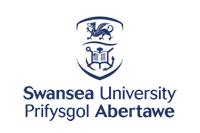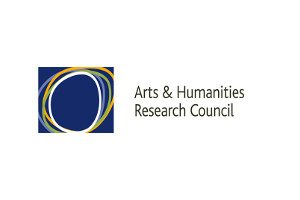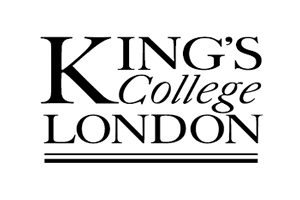Rokeby Park, Yorkshire
Joanna Barker
The Rokeby family are known to have held land in north Yorkshire since 1201, and were prominent servants of the English Crown in the 14th and 15th centuries, particularly in battles against the Scots and the suppression of Northern rebellions. They owned extensive lands around Mortham, near Barnard Castle (the restored Mortham Tower is adjacent to the current boundary of Rokeby Park.) The estate remained in their possession until 1610, when it was sold to William Robinson.
William Robinson (1560-1643) was born in the nearby village of Brignall. Brignall and Rokeby were then in North Yorkshire, but are now in County Durham as a result of the 1974 local government reorganisation. He was baptised at Patrick Brompton, north-west of Bedale on 20th Oct 1560. He was a successful London merchant, and on 20th October 1591 married Mary Hill, daughter of Thomas Hill of Thornton in Yorkshire, which may refer to Thornton Steward near Bedale.
In 1601 William purchased the manor of Brignall, and on 7th June 1610 he bought Rokeby from Sir Thomas Rokeby. Whilst the Genuki site, which takes information from Bulmer’s History and Directory of North Yorkshire 1890, misreports that the estate was sold to William Robinson by Col Thomas Robinson at the end of the Civil War, it is clear that it was Sir Thomas Rokeby from whom William purchased Brignall. Both the Rokeby Park website and British History Online, and also the baptismal records of William Robinson (1624-1658) and his brothers all show them as born at Rokeby.
William rebuilt the house, which was occupied by the next four generations of his descendants. In 1720 it passed into the ownership of his fifth great-grandson, the eighteen-year-old Thomas Robinson (1703-1777), who on 2nd March 1730 was created 1st Baronet Robinson of Rokeby Park.
Thomas Robinson was a talented amateur architect, and wished to live in a house that reflected contemporary standards of elegance, so he pulled down the house and replaced it with an Italianate Palladian villa, completed around 1730. He built a wall around the park and planted it with trees, but did not lay out any formal gardens. He was a passionate devotee of neo-Palladianism, and the house bears a resemblance to Lord Burlington’s villa at Chiswick.
Thomas was elected to parliament in 1727, but his political career was undistinguished, and from 1734 he devoted his time to putting on costly entertainments in London. By 1742, he had racked up such large debts that his friends arranged for him to be sent to Barbados as Governor. He returned five years later with his finances in no better shape, having paid for capital works out of his own pocket and received only a fraction of the dowry of his second wife, who refused to accompany him back to England.
On his return, he built another house in London where he threw lavish parties and became co-owner and Master of Ceremonies of the Ranelagh pleasure gardens. In 1765 his lack of funds forced him to advertise Rokeby Park for sale, and in 1769 it was bought by John Sawrey Morritt, complete with its furniture and pictures.
Morritt made various additions to the house, including the construction of a new stable block, the creation of a print room, the completion of the church and the construction of the Abbey Bridge. His grandson R A Morritt added an intermediate storey to the east pavilion to accommodate his large family. All of these alternations were carefully designed to be in keeping with Sir Thomas Robinson’s original house.
The house stands in a delightful setting, adjacent to the deep limestone ravine of the River Tees and the point at which it meets the River Greta: this was immortalised by JMW Turner in his painting “The Meeting of the Waters”. The library and music room are largely unaltered since the 1730s, and many of the contents are contemporary with the house.
Rt. Revd. Richard Robinson (1708-1794), Primate of All Ireland, was Thomas Robinson’s younger brother, and bitterly regretted the alienation of their family seat. When he was awarded an Irish barony in 1777, he chose the title Baron Rokeby, and built himself a new house in County Louth, designed by Thomas Cooley and built by Francis Johnston, which he called Rokeby Hall. This building is grander and more imposing than Rokeby Park, though built in the same neo-classical style.
The Primate’s title of Baron Rokeby passed to Elizabeth Montagu’s eldest brother, Matthew Robinson Morris, and after his death in 1800 to his nephew Morris Robinson. Since he died childless, the title passed to his brother Matthew Montagu and in turn to Matthew’s sons Edward and Henry. Henry Montagu was the 6th and last Baron Rokeby.
However, much to the disappointment of Elizabeth Montagu’s family, the Primate left Rokeby Hall in Ireland to his nephew Archdeacon John Freind, who took the name Robinson and in 1819 was created 1st Baronet Robinson of Rokeby Hall. However, he did not occupy it for long, and left for England after his father-in-law was murdered in the 1798 Rising. The house and estate remained in the Robinson family until 1912.
Rokeby Park is still owned by descendants of J S Morritt, and is open to the public on certain days of the year.
Please note that all dates and location information are provisional, initially taken from the library and archive catalogues. As our section editors continue to work through the material we will update our database and the changes will be reflected across the edition.
Browser support: The website works best using the Chrome, Edge, and Firefox browsers on the PC, and only Chrome and Firefox on the Mac.




